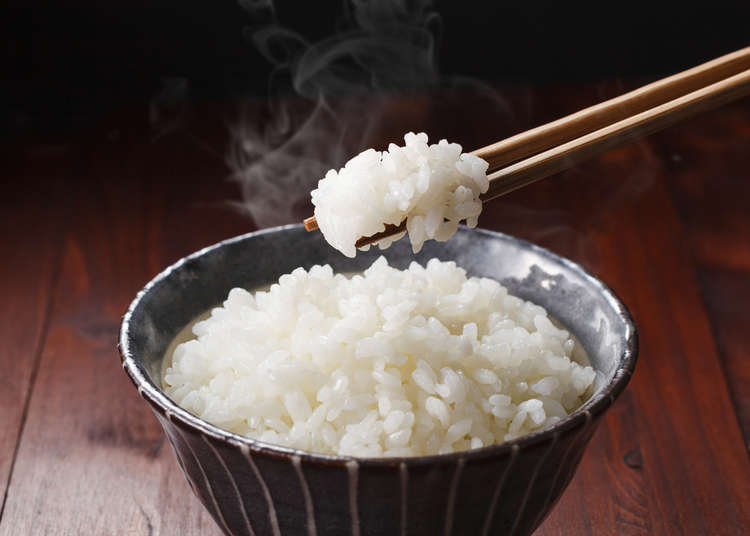
Have you ever wondered why food seems to taste so good in Japan? You may have gone to Japanese restaurants abroad, yet somehow eating in Japan is different. Somehow it seems to taste better! Perhaps this is due to the quality of rice found in Japan, as there is nothing quite like freshly made rice.
However, calling it Japanese rice is quite a generalization as we can talk about varieties of rice such as white rice, Genmai (brown) rice, mochi rice and Haigamai (half milled) rice, but then it gets even more complicated with regional types of rice. White rice itself falls into mainly two categories, Koshihikari (which is stickier with a fuller taste) and Sasanishiki, which the regional varieties then tend to fall under.
On top of this it isn’t simply a case that Japanese people buy rice, cook it and eat it; in fact there are also specialty foods and drinks (like rice beer and sake) which are made from rice and are equally delicious.
History of Rice
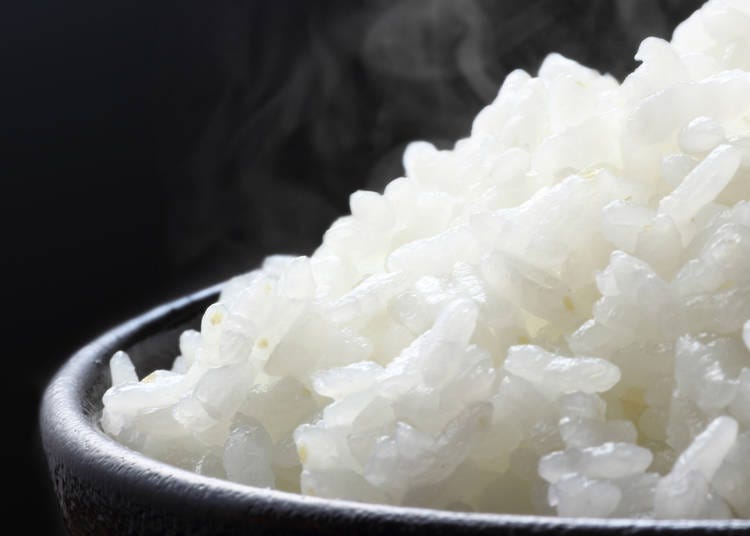
Rice is quite intertwined with Japanese culture, the cultivation of this crop dates back thousands of years and this led to important imperial rituals being based around rice planting and harvesting. It has even been used as a form of taxation! However, we have to dismiss the assumption that just because Japan is seen as a rice culture that means all Japanese people has been eating rice every day for all of history; in fact it is only in the 17th century that rice started to become a daily staple of Japanese life. In addition, in mountainous areas and the far north of Japan it wasn’t until later that rice production started. By the 19th century rice was firmly entrenched as part of the Japanese diet, and in recent years regional types have been developed.
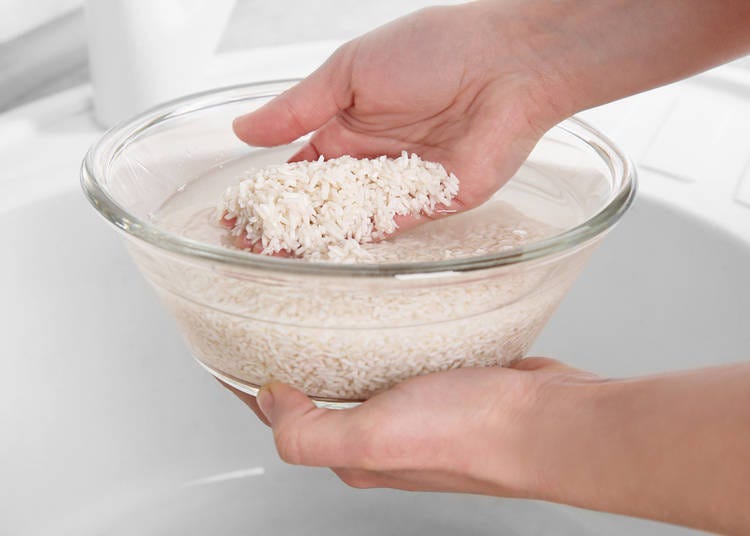
As Japan has such a well-developed range of rice you may think that in order to enjoy it abroad you simply need to buy it, but if you have tried this you have probably discovered that it hasn’t tasted the same! This is partly due to preparation, Japanese people rinse the rice and ideally the rice should be left in water overnight before cooking, and then a Japanese rice cooker represents decades of research into making the best rice. In addition, an important aspect of cooking rice is water! Water, in the form of rain, initially has little mineral content – it picks this up from the ground it falls upon. The ground around the world is made up of different substances, and therefore the drinking water is in fact different. Unfortunately, for rice aficionados outside of Japan this means it is difficult to replicate the taste of Japanese rice.
Culture of Rice
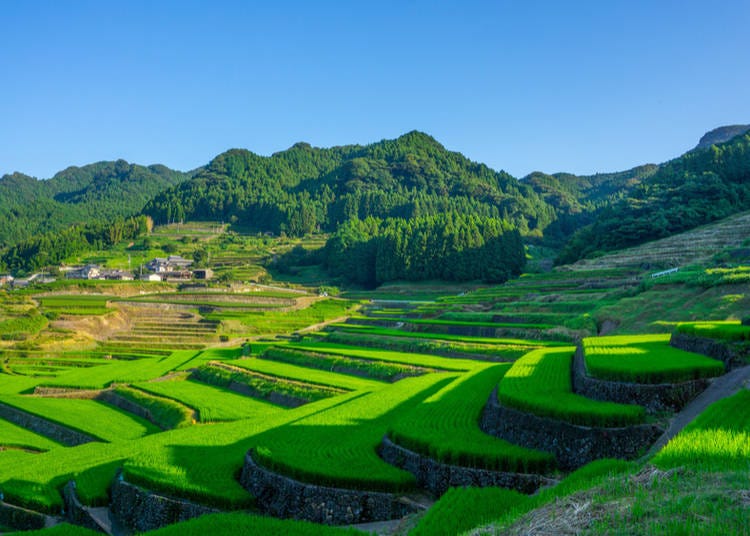
As explained above certain imperial rituals coincide with rice planting and harvesting, but it is possible to draw links between rice and the deeply cultural concept of Wa, or group harmony. As Japan is a mountainous country farming wasn’t easy, for thousands of years Japanese farmers have had to work together in order to make a living – even today the average farmer’s plot is quite small and cooperation with others remains a key component behind successful farming. In the 7th century Japan’s first constitution was put together and Wa was a key value. We can also see the impact that rice has made on Japanese society through its use in language, cooked rice is typically referred to as ‘gohan’ and every meal of the day includes the word ‘gohan’ regardless of whether rice is actually in the meal or not. Every country has its own table manners, and this is no different in regards to Japan and rice, for example rice should always be placed on your left hand side. Rather than mixing rice with other foods on your plate it should remain separate, so for example you take a bite of beef or fish, and then a mouthful of rice. It is also important to try and eat every single last rice grain in your bowl (even though this is very difficult!).
Rice is more than Rice
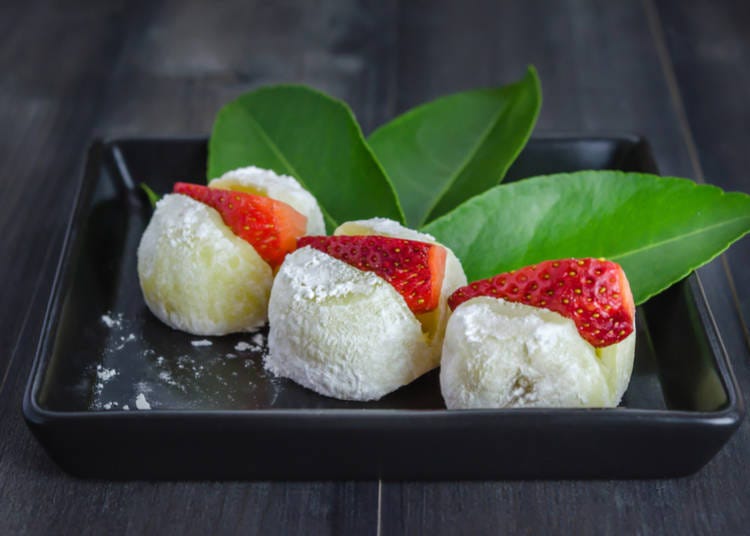
It is important to remember when visiting somewhere in Japan like Tokyo that rice doesn’t necessarily just mean rice. For example, Kaminari-okoshi – a famous sweet in Asakusa, Tokyo – is made from a basic foundation of roasted rice. Another example is mocha, a rice cake, the rice is pounded into a paste and molded into a shape and is a favorite food for the Japanese New Year, it was also a popular food for samurai to have with them as it was easy to carry and prepare! In addition rice can also be milled down to make into rice flour; this is then used to make such foods as rice bread and dango. Probably one of the more famous Japanese rice based products is sake, an alcoholic drink made from fermented rice. In addition, you can find, rice tea, rice wine, the unique Awamori rice based drink of Okinawa, hot Amazake (a sweet alcoholic drink) which is popular around New Year and more! In addition to the above rice has also made its way into cosmetics such as lotions and creams, which definitely makes Japanese cosmetics a unique product to buy for visitors to Japan.

For anyone in Japan for tourism food is an important part of the Japanese experience, and at a basic level most meals you eat will be served with rice. However, rice goes beyond being just food – eating every last grain of rice in a bowl isn’t just about manners, it is also a way of showing appreciation and gratitude for having food in the first place. In Japan the variety of rice is carefully selected in terms of its purpose, whether that be sushi, curry rice or for something else, it is also prepared with care in order to achieve the best taste possible. It may seem like just a basic staple of food, but when you eat rice you are literally experiencing a cultural taste which you won’t find anywhere else!
*Prices and options mentioned are subject to change.
*Unless stated otherwise, all prices include tax.
Popular Tours & Activitiess
Recommended places for you
-

ISHIDAYA Hanare
Yakiniku
Kobe, Sannomiya, Kitano
-

Jukuseiniku-to Namamottsuarera Nikubaru Italian Nikutaria Sannomiya
Izakaya
Kobe, Sannomiya, Kitano
-

Kanzenkoshitsuyakinikutabehodai Gyugyu Paradise Sannomiya
Yakiniku
Kobe, Sannomiya, Kitano
-

Kambei Sannomiyahonten
Yakiniku
Kobe, Sannomiya, Kitano
-
Appealing

Rukku and Uohei
Izakaya
Sapporo / Chitose
-
Goods

Yoshida Gennojo-Roho Kyoto Buddhist Altars
Gift Shops
Nijo Castle, Kyoto Imperial Palace
-

2025 Japan Autumn Color Report: Tokyo's Ginkgo Trees Starting to Glow
by: Timothy Sullivan
-

New Seibu L00 Series Launching in 2026! What to See Along the Tokyo-Area Golden Route
by: Guest Contributor
-

Black Friday 2025: These Are THE Japan Travel & Shopping Deals to Check Out
-

2025 Autumn Colors Report: Kurobe Gorge Nearing Peak
by: Timothy Sullivan
-

Get Ready to Catch 'Em All! First Ever Permanent Outdoor Pokémon Park Opening Near Tokyo!
-

Enjoy Japan's Gorgeous Winter Lights! Ride the Romancecar to Shonan no Hoseki Illumination
by: Guest Contributor
-

Oga Aquarium GAO Guide: Fish, Polar Bears and...Godzilla?
-

Ginza Sony Park: Experiencing Tokyo’s Newest Park on the Site of the Former Sony Building
-

Kichijoji – Explore Tokyo’s Top-Rated Stylish Suburb in Half a Day!
-

Mitsui Outlet Park Marine Pia Kobe: Shopping, Dining & Resort Fun Near Awaji Island
by: Tabiningen
-

Japanese Foods List: 16 Crazy Tasty Japanese Tohoku Region Dishes You've Never Heard of
-

Sendai Food Guide: What to Eat and Where to Savor Local Delicacies
- #best sushi japan
- #what to do in odaiba
- #what to bring to japan
- #new years in tokyo
- #best ramen japan
- #what to buy in ameyoko
- #japanese nail trends
- #things to do japan
- #onsen tattoo friendly tokyo
- #daiso
- #best coffee japan
- #best japanese soft drinks
- #best yakiniku japan
- #japanese fashion culture
- #japanese convenience store snacks












